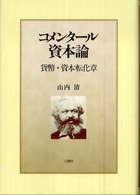Full Description
This book comprises a study of music in Iran from the Timurid period in the fifteenth century up until the end of the Qajar period at the beginning of the twentieth century. It examines many aspects of music making in this span of time including centres of musical patronage, the role of patrons, music theorists, music treatises, the social organization of musicians, courtesan and concubine culture, and performance contexts. It also compares descriptions of musical sessions and performance formats from different periods and considers Western influence, socio-political developments, and contact with other musical cultures. Music Making in Iran also scrutinizes the emergence and evolution of modal entities, rules for modulation, the formation of court repertoires, the development of rhythmic structures, vocal and instrumental genres, and forms of composition.
Contents
List of IllustrationsList of TablesNote on Transliteration and TranslationAcknowledgementsPreface
Part I Historical and Social Contexts
1 Centres of Musical Patronage between the Fifteenth and Eighteenth Centuries
2 Courtesans and Concubines in Early Modern Iran
3 Musical Life in the Nineteenth Century
Part II Music Theories and Practices
4 The Modal System
5 Rhythm
6 Musical Genres
Appendix 1: The Systematist Texts
Appendix 2: The Non-Sytematist Texts
Appendix 3: An Account of the Modal System and Rhythmic Cycles in Non-Systematist Treatises
Glossary
Work Cited
Index







